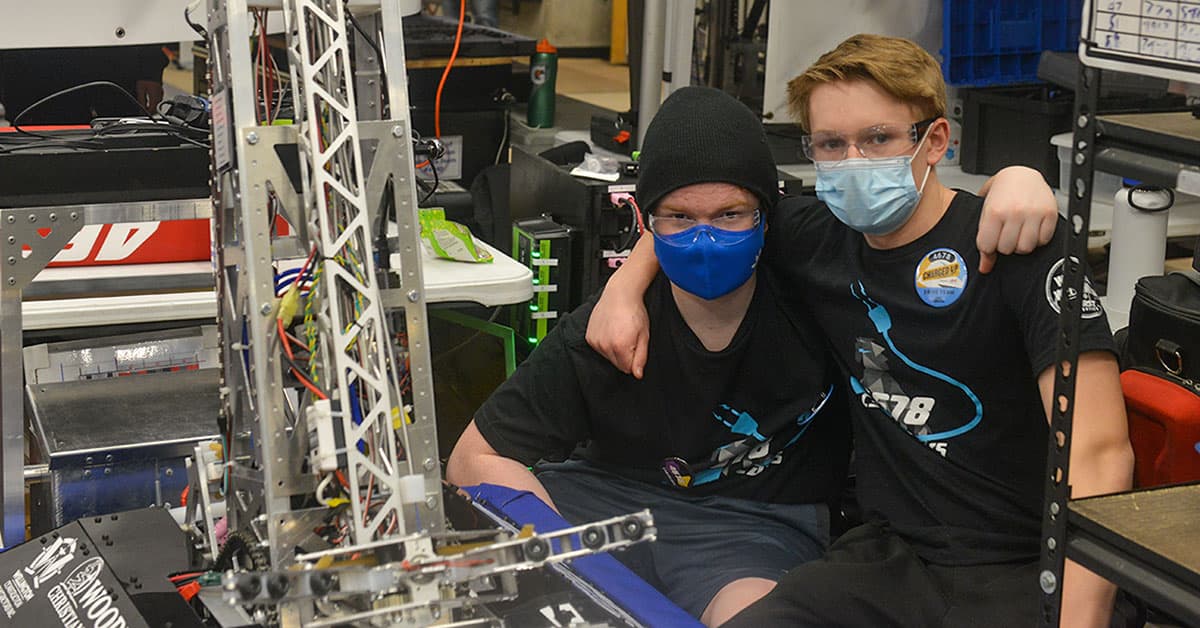It’s Monday late morning, and three generations of Snyders are minding their evaporator, watching as it boils maple syrup.
Looking through the clouds of steam, the sap is boiling intensely and loudly in the stainless steel pan. It looks angry and hot. The steam from the sap fills up the room with white, obscuring the faces of those closest to the pan.
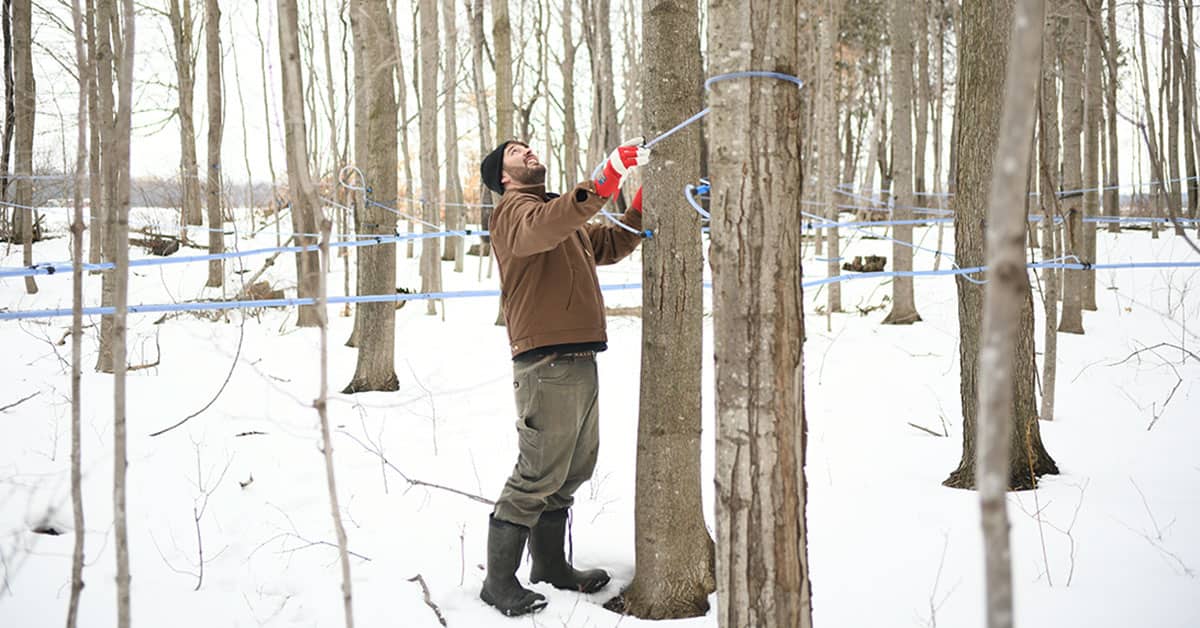
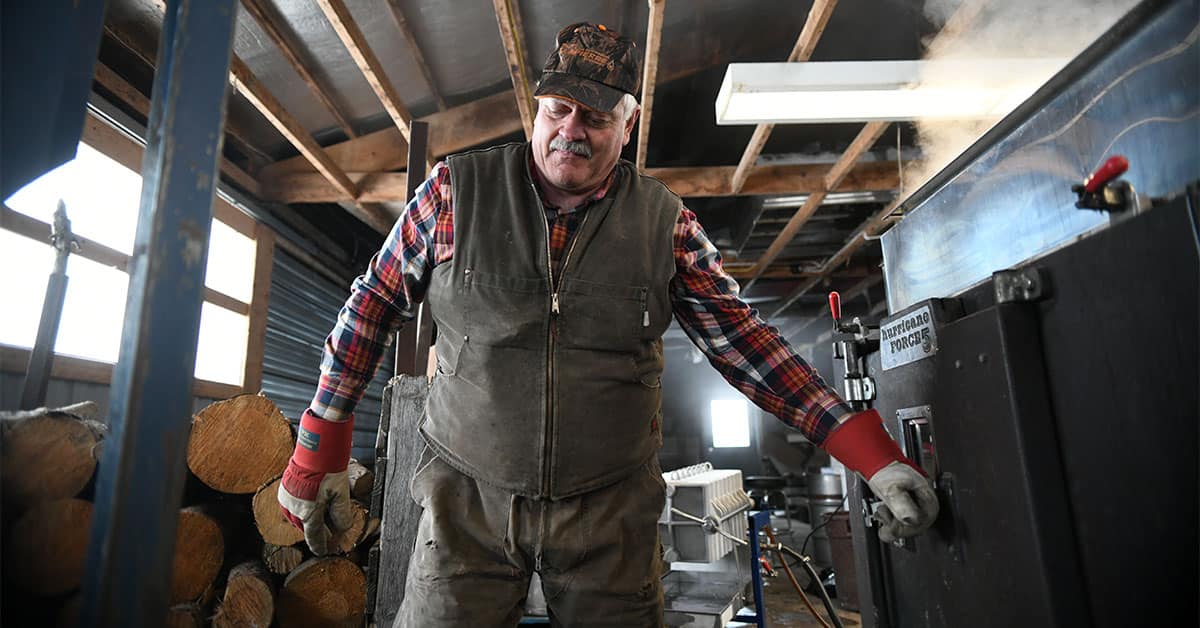
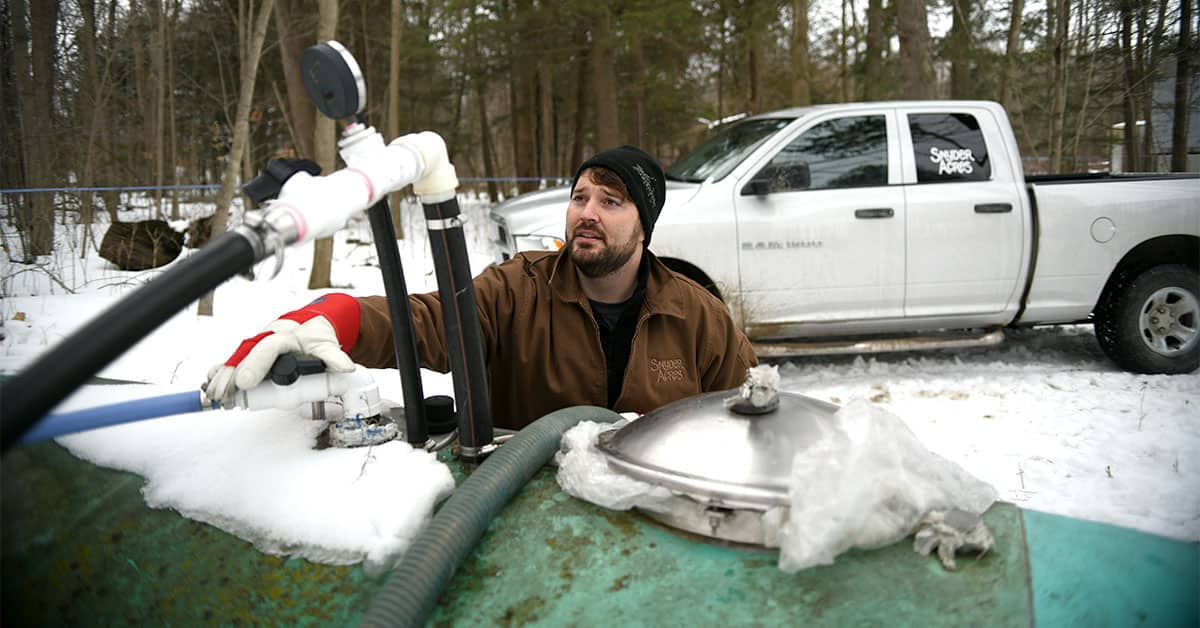
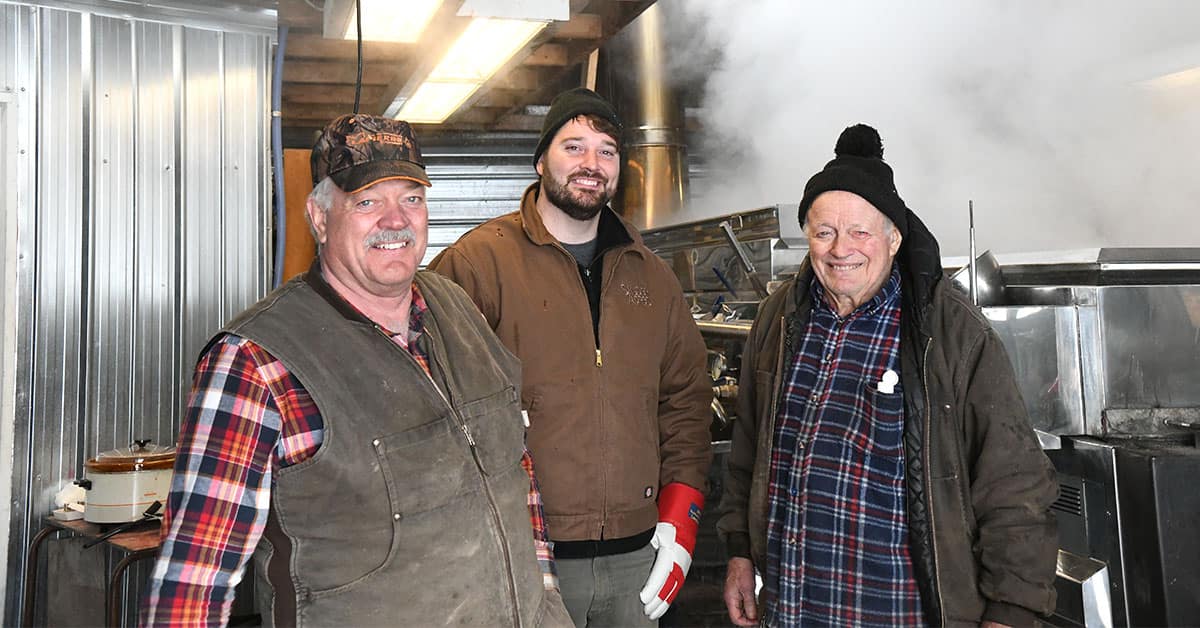
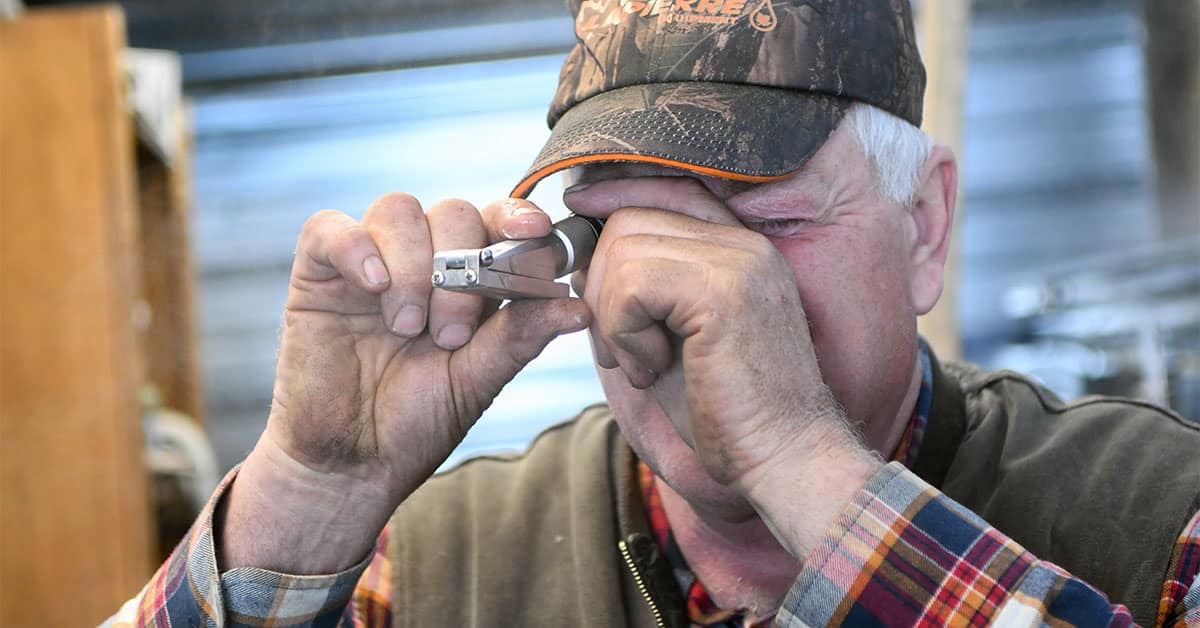
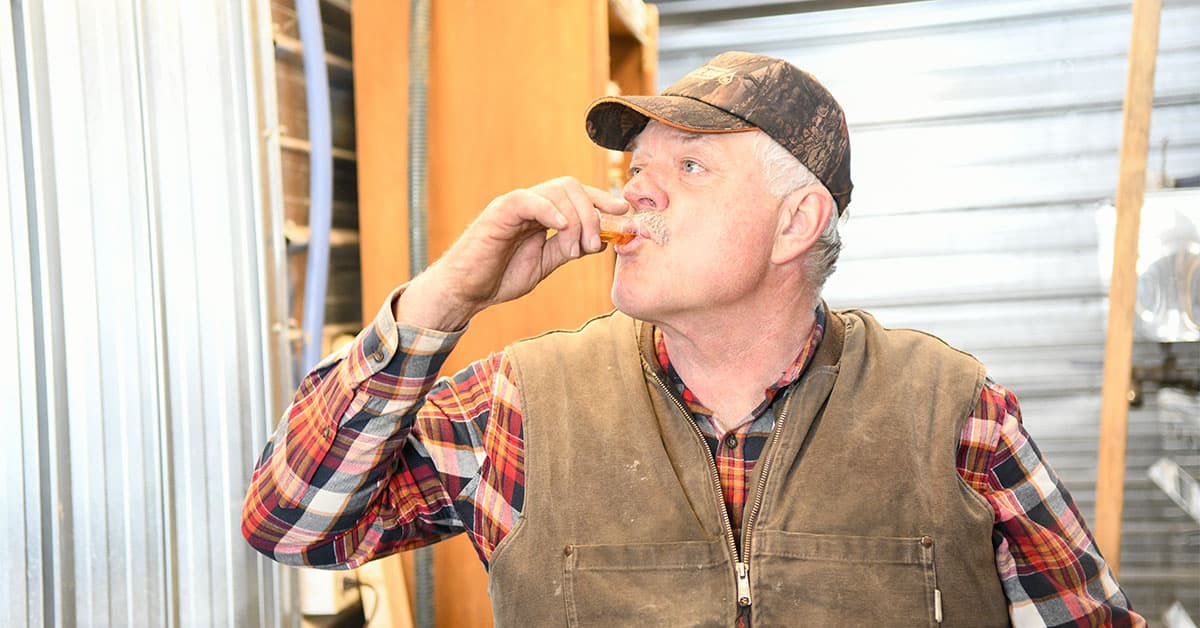
An average customer will know that sap needs to be boiled to make maple syrup. But they might not know how much sap it takes, and how much more concentrated that sap needs to become to make syrup, and what a family goes through to make sure it does.
“My grandpa (Robert Snyder) started to use his own evaporator around 1979. We still work alongside my grandpa and my uncle but the evaporator got moved to our home farm on Durant Road and our first boil here was in 2016,” said Cody Snyder, the latest generation of Snyders to produce maple syrup.
This year the sap started running extremely early, at the very beginning of February. The Snyders dropped their plans and appointments to get their trees tapped, lines and pumps ready and the evaporator going.
Once the lines are flushed and the vacuum is on and the sap is running, it runs into a holding tank. From there it goes through their reverse osmosis machine. This pushes the sap through a filter to increase the concentration from about two per cent to between 17 and 20 per cent. At this point, the sap is called concentrate.
The reverse osmosis machine is a powerful tool for the Snyders. It cuts down the amount of time needed to boil the sap into syrup by about 75 per cent.
In theory, sap could reach the ideal sugar content of 66 to 69 per cent through the reverse osmosis process, but it’s the chemistry of boiling the sugars that creates the maple flavour, said Cody.
The concentrate is then sent to the evaporator, which boils it in two pans.
“When we are in full swing and everything is warmed up and boiling, we process roughly one barrel of syrup (150L) per hour,” said Cody.
Robert Snyder, Cody’s grandfather, recalls how maple was produced when he was younger. “I remember, when I look back now, there were no pumps. So imagine you’ve got to do everything with a pail,” he said. “I remember going out with the horses and the sleigh and sometimes if the track is a little crooked, your tank would slide off. But then, we’d get the track built up then, and from then on it went pretty good.
“The first sapline we put in was like a tile drain system. Slow. No vacuum on it. It worked, but not great. Not like today.”
Graham Snyder, Cody’s dad, sits at the valve where the newly made maple syrup comes out of the evaporator. He takes a sample from each batch to taste as it comes off, and looks at it with a refractometer that measures the sugar content of the liquid by measuring how much light is refracted through it. He also makes sure the fire is at the right temperature, feeding wood into the bright orange, glowing hot stove at the bottom of the evaporator.
From here the syrup is pumped through a filter press, the kind used for wineries and beer. It pushes the syrup through a series of filter papers and separates the pure syrup from the minerals and particulates called nitre (sugar sand). The Snyders put the nitre on their fields as it’s mostly made of minerals from the trees. Another way to filter syrup is gravity fed through a filter cone, though the Snyders say the filter press is more efficient.
Once through the filter, the syrup is pumped into their stainless steel barrels. From here it can be bottled and sold.
Three generations of Snyder maple producers and their helpers will be at this work all day – as long as the sap keeps running. Sherrie, Cody’s mom, brings in a pot of soup she’s made in a crock pot for the team to help themselves. A bag of chips sits near the stainless steel barrels. They’re set up for a long stay in the sap shanty.
Maple syrup production takes place on top of their usual work of running a cash cropping farm and the off-farm jobs family members hold. Cody works part-time as a teacher when he’s not on the farm.
When the sap is running and boiling, the family is constantly minding the evaporator and carefully, obsessively, checking the quality of each batch that comes off the evaporator. The hundreds of feet of lines in their woodlots need to be checked regularly to fix any damage caused by curious, nibbling forest animals. If there’s a lot of snow, tapping trees, setting up and checking lines can be real slow-going, taxing work.
The work of making maple syrup is physical, but the mental load is real – maple producers are constantly juggling schedules, watching the weather and making their best predictions. Equipment must all be food grade stainless steel or plastic, and costs of everything are going up.
What are the most stressful factors?
“Where to begin?” said Cody. “If I’m completely honest, I’ve been working with my dad, I’ve been working on the farm my whole life practically. But I’ve been here for about five years now, coming up in May.
“And the syrup season comes so hot and so heavy that it is probably the busiest time we have in the entire year. It’s either that or when we finish beans, and we’re taking off beans, while we’re planting wheat, those are the two busiest times of the year. Days turn into weeks turn into months, and then you blink and then you’re done.”
He takes a few minutes to check the sugar levels of the latest sap that’s come in from their different woodlots by taking samples from the clear sap and putting them in a digital refractometer, which tells him the sap concentration on the screen.
Usually, sugar content will fall as the season goes on, he says. But since a recent cold snap, the trees have seemed to “reset,” and he finds the sap is actually sweeter than it was at the start of the season.
Once sap gets a “buddy” flavour, that’s when it’s time to stop taking sap from those trees, he explained. The buddy flavour gets its name because it happens just as the trees’ buds are beginning to swell and lengthen. Researchers believe it may happen as trees release sulfur into the sap as the temperature rises. Different maple species have different tolerances for temperature and will release sulfur at different points. So the Snyders know to stop taking the sap from some trees at that time. In their wood lots, they have a mix of black, red, silver and sugar maples.
Besides managing production of maple syrup now, the Snyders also have to think about the future.
Each year, the family plants more trees. Cody says they’re focusing on freeman maples, a hybrid between sugar and silver maple species. He’s hoping they’ll produce sap with the sweetness of a sugar maple, but grow with the speed of silver.
“I’m trying to make it so that I can still tap the trees I’m planting in my lifetime,” said Cody. He also has to think about the future of the farm as a whole. He watches the growing City of Kitchener appear more and more on his horizon line.
He says these days, the forest is constantly interrupted with the sounds of cars, planes and helicopters.
“Our one bush is in Bloomingdale, and we’re close enough to the airport, and when we’re tapping, we’re in that bush, all you hear is the planes overhead. You hear them like crazy,” he said.
But despite the worry, the stress and the extra workload, maple runs in the Snyder family’s blood.
“It’s a natural food and it’s good for you. It’s there, you just gotta go get it,” said Robert.
Still at his post by the syrup valve, Graham tastes another syrup sample. Does he ever get tired of the maple taste?
He smiles. “Never.”



